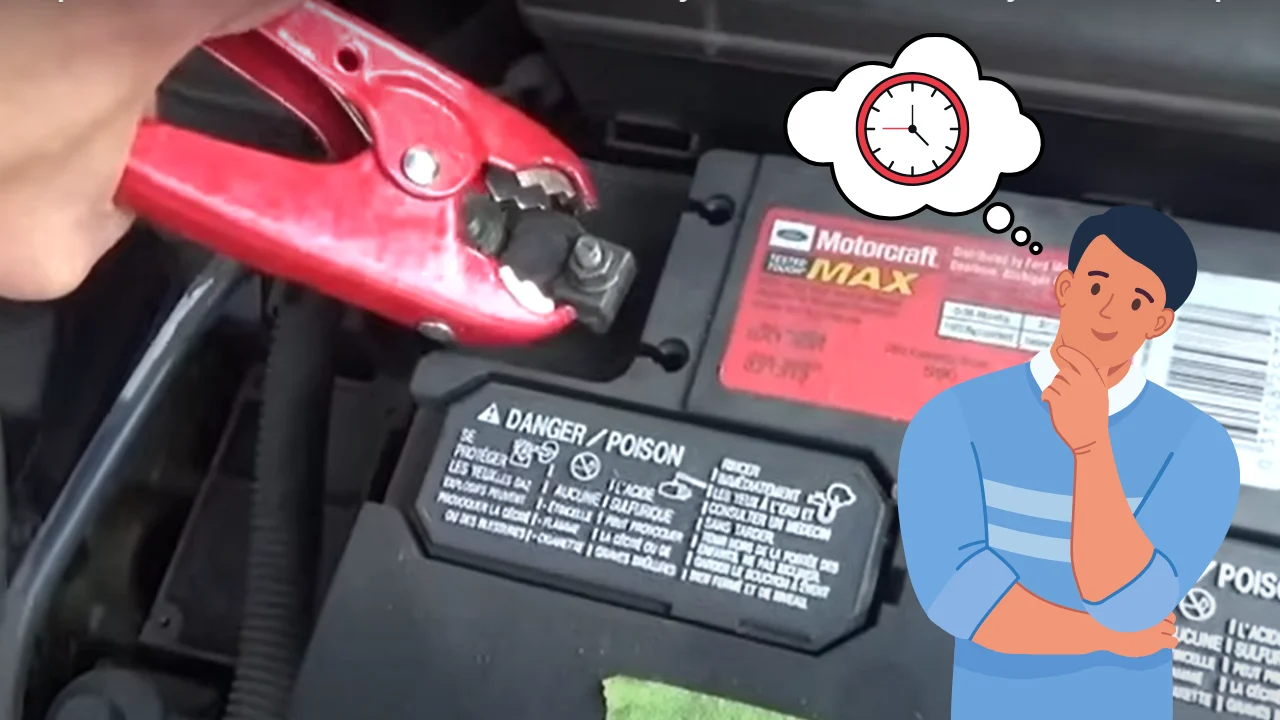When it comes to getting back on the road with a dead battery, many people wonder, “how long does it take to jump start a car?” Typically, the process can take about 5-15 minutes, depending on the battery’s condition. Even on busy days, a quick jump-start means you’re not stranded for long. Understand the mechanics behind jump starters in How Does a Jump Starter Work to see how they bring vehicles back to life.
The actual time depends on the age of the battery and the outside temperature—colder weather often adds a few minutes. Having reliable jumper cables also helps, making the whole process feel quicker and easier.
Quick Look
Jump-starting a car usually takes about 5-10 minutes to set up and connect the cables, followed by a few minutes for the battery to charge. In colder conditions or with older batteries, it may take up to 30 minutes. Afterward, driving for 20-30 minutes helps recharge the battery fully.
Why does it sometimes take longer to jump-start a car?
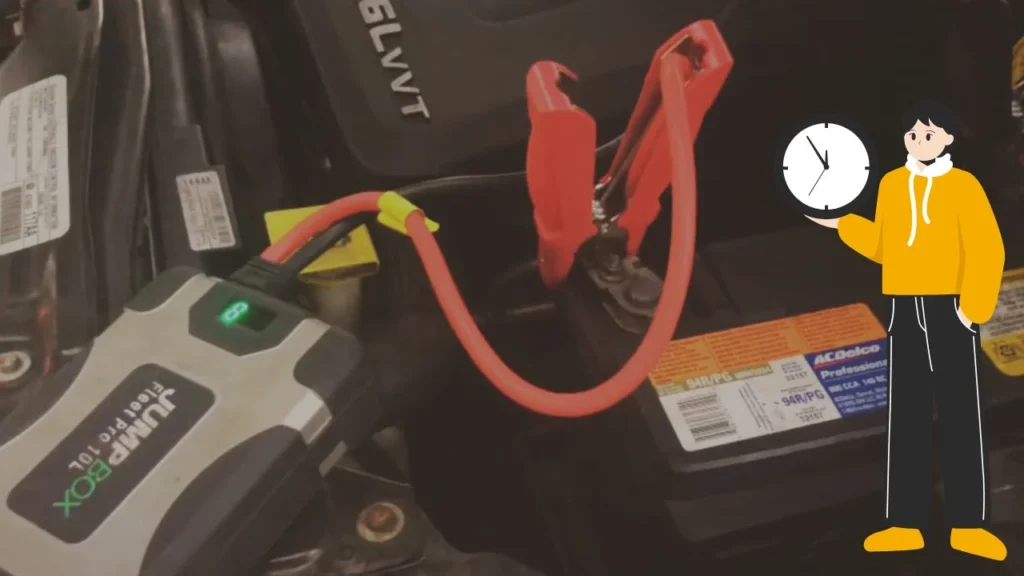
It can take longer to jump-start a car due to several factors. In cold weather, battery efficiency drops as the chemical reactions needed to generate power slow down, requiring more time to gather sufficient charge.
An older or heavily drained battery, often with deteriorated internal components, can also take longer to start since it struggles to hold and accept charge effectively. Thin or low-quality jumper cables transfer power more slowly, further delaying the process.
Altogether, these factors can extend the jump-start time to around 30 minutes in some cases, especially in harsh conditions or with weakened batteries. Find out Can You Jump Start a Car with a Bad Alternator – What You Need to Know to understand how to handle alternator issues when jump-starting.
Factors Influencing Jump-Start Time
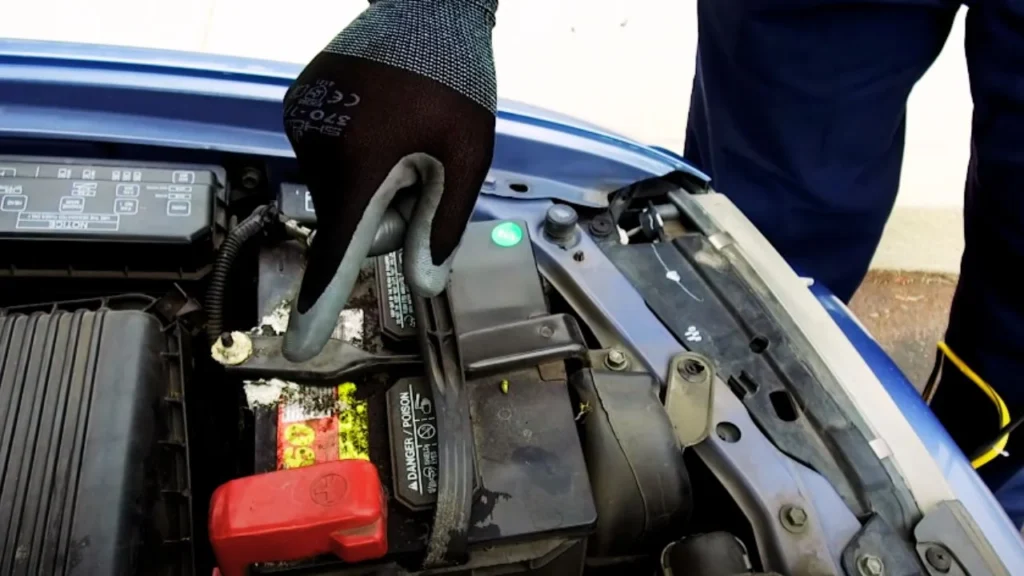
The time it takes to jump-start a car can vary widely, depending on several factors. Knowing what affects the process is key, and it helps manage expectations, whether you’re in a rush or just want to be prepared.
Battery Condition: If your battery is just low, you might only need around 5 minutes of charge time to get the car started. But with an older or “dead” battery, this could stretch to 15-20 minutes or more. The battery’s health plays a big role in jump-start time!
Temperature: Cold weather? Brace yourself! Below-freezing temperatures (32°F or lower) can add up to 10 minutes to the jump-starting process. Colder conditions make it harder for batteries to hold a charge, which means more time waiting.
Condition of Jumper Cables: Surprisingly, the type of jumper cables you use can speed things up—or slow you down. Lower-gauge cables, like 4-gauge or 6-gauge, transfer more power quickly and can reduce jump time by up to 5 minutes compared to thinner ones.
Vehicle Type: Did you know that bigger vehicles like SUVs and trucks usually take longer to jump-start? These larger batteries might need up to 15 minutes more than smaller, sedan-type batteries to reach a full enough charge to start.
How Long Does It Take to Jump Start a Car? Step-by-Step Process
Preparation and Safety Check (2-3 Minutes)
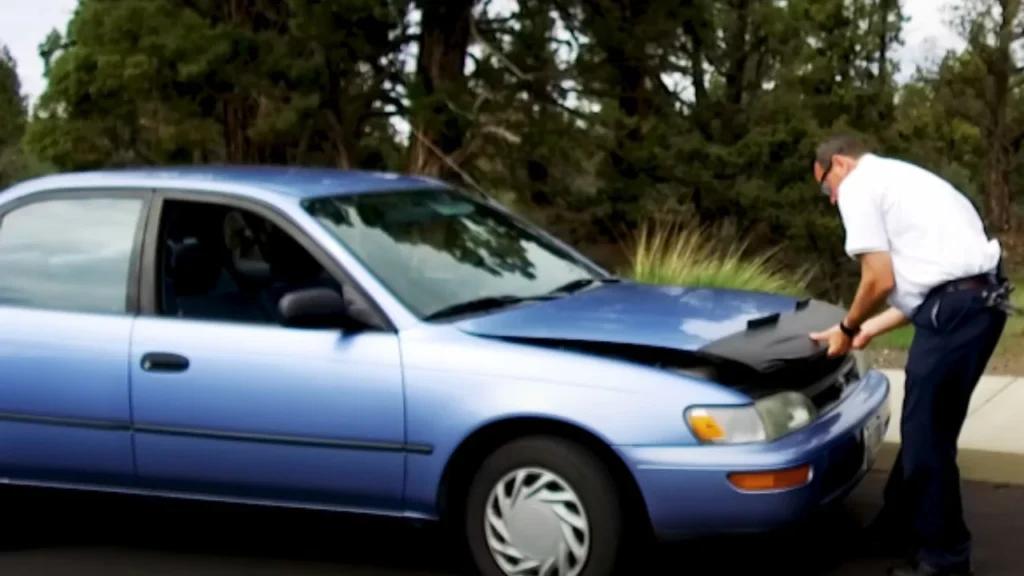
First things first: positioning the cars is key! I make sure the dead car and the booster car are parked close enough, ideally within 12-24 inches, so the jumper cables can reach comfortably. With both engines off, I locate the battery terminals on each car. This takes about 2-3 minutes, depending on the car layout and my familiarity with the battery location.
Attaching the Jumper Cables (2-4 Minutes)

To ensure a safe connection, I start by connecting the red (positive) clamp to the dead car’s positive terminal. Next, I attach the other red clamp to the booster car’s positive terminal. After that, I connect the black (negative) clamp to the booster car’s negative terminal and finally connect the last black clamp to a grounded, unpainted metal surface on the dead car, like a bolt. This process, if done carefully, should take around 2-4 minutes.
Charging the Dead Battery (5-10 Minutes)

Once everything is securely attached, I start the booster car and let it idle. Generally, I leave it running for 5-10 minutes to charge the dead battery. If I’m in a rush, revving the booster engine to about 1,200 RPM can push more current and possibly speed up the charging, potentially reducing this time to 5 minutes.
Starting the Dead Car (1-2 Minutes)
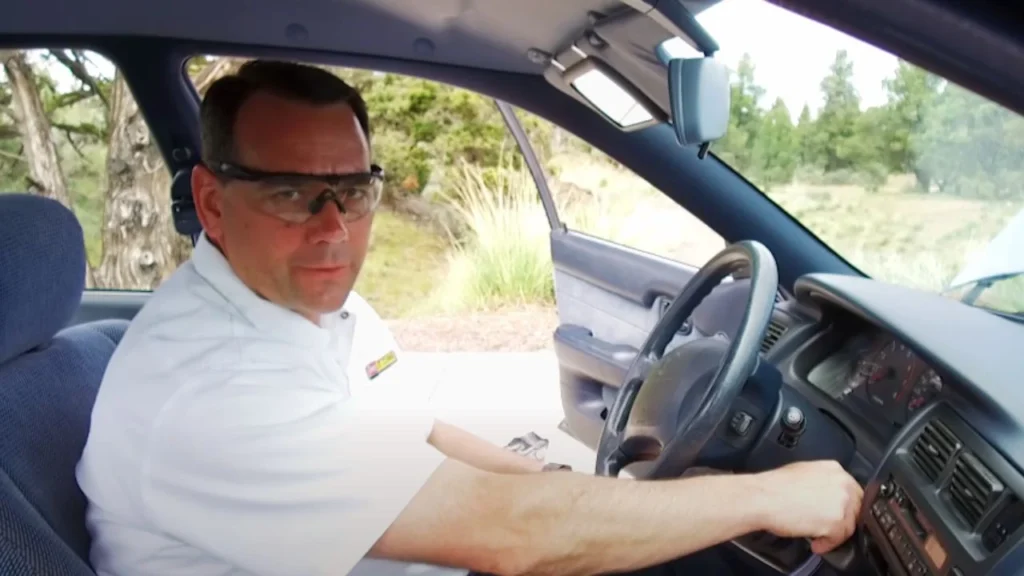
Now it’s time to try starting the dead car. I give it a turn after the charging time and, if it doesn’t start right away, I wait another minute and try again. Usually, the dead car should come to life within one or two tries, totaling about 1-2 minutes.
Disconnecting the Cables (2-3 Minutes)
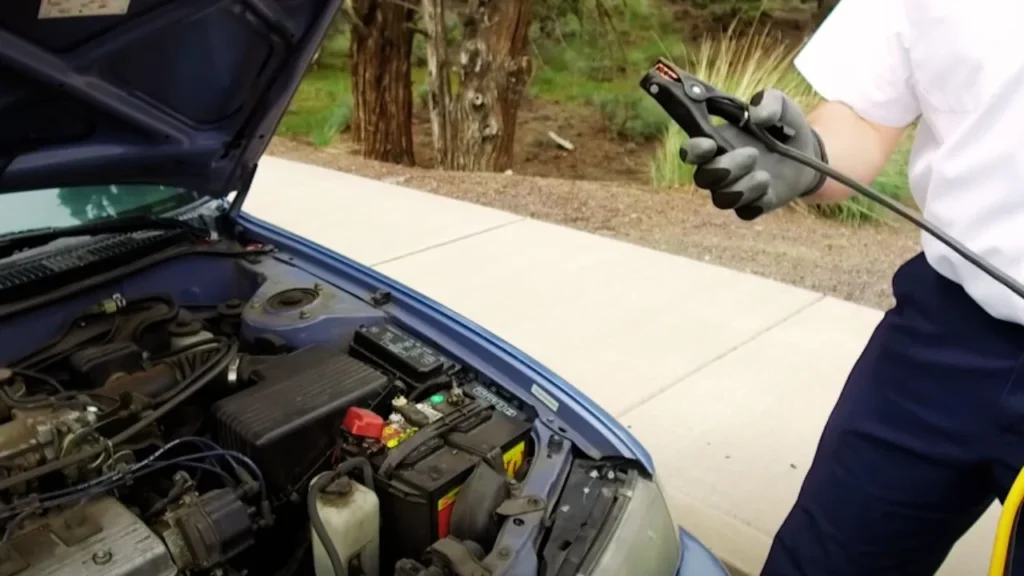
Once the car starts, I begin to disconnect the jumper cables in reverse order: black clamp from the grounded metal, black clamp from the booster, red clamp from the booster, and finally, red clamp from the dead car. Careful disconnection is crucial to avoid any accidental sparks, so I take about 2-3 minutes here.
Post-Start Idle Time (15-30 Minutes)

After the car starts, it’s essential to let it idle or drive it around for at least 15-30 minutes. This time allows the alternator to fully recharge the battery so I won’t need another jump soon after.
Total Estimated Time:

All in all, from start to finish, jump-starting a car generally takes 27-52 minutes depending on the specific steps, weather conditions, and the car’s battery health.
Post-Jump Considerations
Once you’ve got the car started, it’s not over yet! To keep it from stalling again, the car’s battery needs some time to recharge fully. Driving for about 20–30 minutes is typically enough to let the alternator do its job and top up the battery’s power.
If you’re driving, aim to keep a steady speed. When I do this, I usually aim for at least 20 minutes on the road or keep the car idling if I can’t drive immediately. This process helps get the battery close to its optimal charge level, so it won’t need another jump anytime soon.
For best results, try to avoid powering off the car until you’ve completed that drive. Otherwise, there’s a risk the battery will drain out again, especially if it’s old. If you still encounter issues after a 20-minute drive, a battery test may be a good next step. Get step-by-step instructions in our guide, How to Jump Start a Car by Yourself – Complete Guide, to safely jump-start your vehicle independently.
Troubleshooting Tips
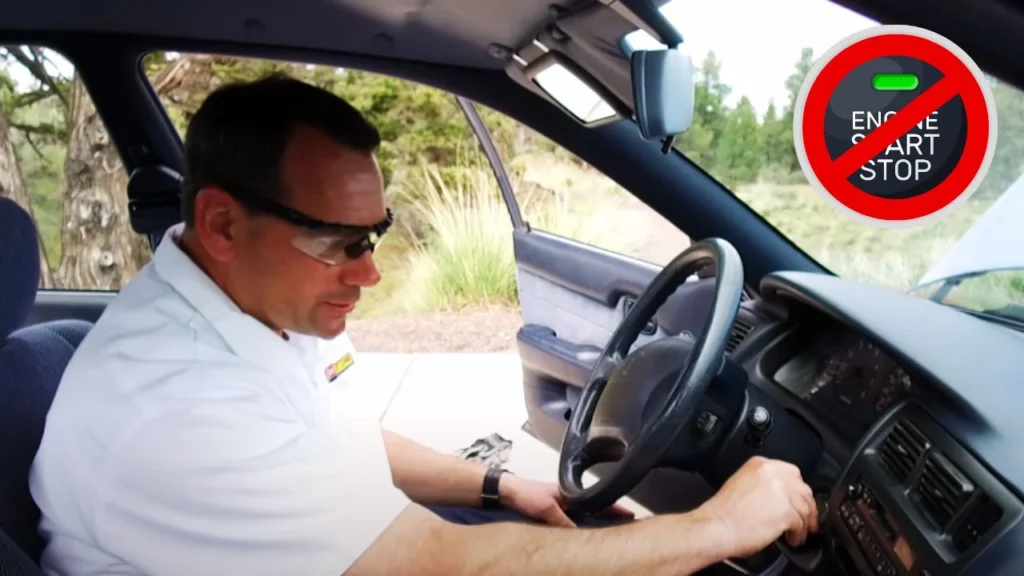
Sometimes, even with all the right steps, a car won’t start after a jump. If that’s happening, it might signal a bigger problem. Here, I’ll share a few practical tips and numbers to help you identify what could be wrong and keep your car running smoothly.
Car Not Starting After Jump Attempts
Sometimes, a car just won’t start, even after multiple jump attempts. If your car isn’t responding after two or three tries, it might mean there’s a deeper issue. About 40% of the time, this could point to a failing alternator, which can’t keep the battery charged effectively.
Aging Battery
Another common issue is a battery that’s simply too old. Car batteries usually last 3-5 years, so if yours is on the older side, it may need a replacement. An easy way to tell is if the car doesn’t hold a charge, even after driving for 20-30 minutes post-jump.
Loose or Corroded Terminals
For anyone dealing with constant jump-starts, checking the battery’s connections can be a game-changer. Nearly 25% of “dead” battery cases are due to loose or corroded terminals. Tightening or cleaning these connections might save you from another failed jump and prevent further battery troubles down the line.
Learn about the 6 Best Truck Jump Starter for Emergencies to keep your truck ready for any situation on the road.
Why Use a Portable Jump Starter?
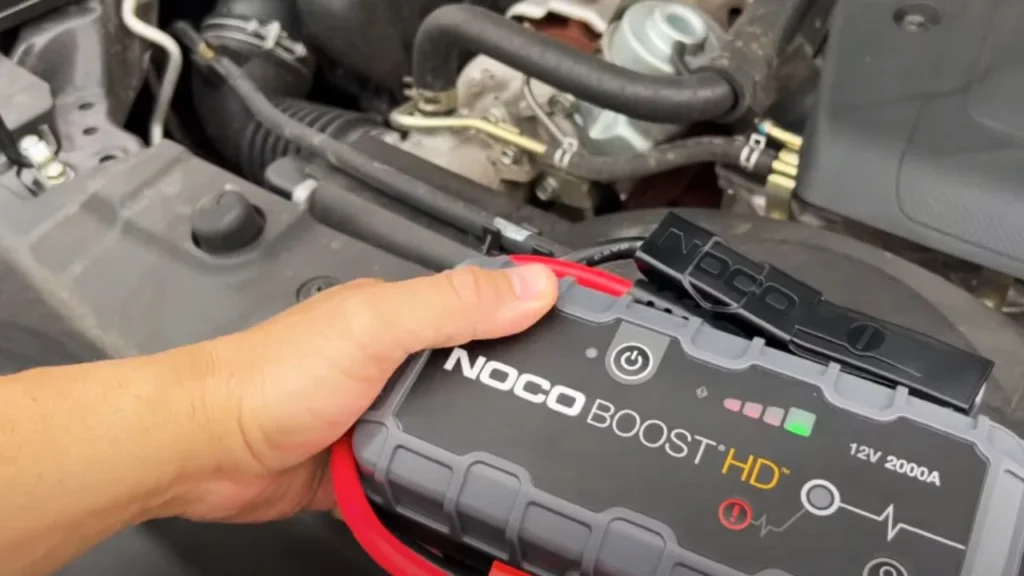
From personal experience, I can tell you that portable jump starters are a game-changer, especially in emergencies. Unlike traditional jump-starting, which often takes 5 to 10 minutes to connect and charge, a good portable device can have your car up and running in as little as 2-5 minutes.
Lightweight and Convenient
The beauty of these devices is their portability—no need for another car. Most units weigh less than 2 pounds, and some can fully recharge in under 4 hours at home. They’re typically rated to deliver around 300 to 1,000 amps, more than enough to jump-start a standard vehicle.
Simple to Use
Using one is simple. After connecting the clamps, turn on the device, and try starting your car within 1 minute. If it doesn’t start immediately, give it another minute. These devices can often start a car up to 20 times on a single charge, making them great for peace of mind.
Final Words
After learning “how long does it take to jump start a car,” I’d say the process isn’t too daunting. In most cases, it takes about 5-10 minutes to set up and charge, plus an extra 20 minutes of driving to recharge the battery fully.
So, in about 25-30 minutes, your car can be up and running. Having a reliable set of jumper cables and keeping them in good condition can save time and hassle in these situations!
Discover the top choices in our article, Top 6 Boat Battery Jump Starter, and find the best options for powering up your boat in emergencies.
